β-Adrenergic Receptor Blockers
| Home | | Medicinal Chemistry |Chapter: Medicinal Chemistry : Antiarrhythmic Drugs
Antiarrhythmic Drugs : β-Adrenergic Receptor Blockers : Synthesis and Drug Profile - i. Acebutolol ii. Esmolol HCl (Cardesmo, Neotach) iii. Sotalol (Sotagrad)
SYNTHESIS AND DRUG PROFILE
β-Adrenergic Receptor Blockers
Mode of action: These are the drugs that mediate the actions through β receptors. β-adrenergic receptor antagonists slow the heart rate and decrease the myocardial contractility; these also prolong the systolic conduction and disturb the ventricular fibres. Dimensions of the ventricle and oxygen consumption are decreased, and thereby decreases the heart rate and aortic pressure. In blood vessels, these drugs reduce the noradrenaline release from the sympathetic terminals and decrease the rennin from the kidney due to the blockade of β receptors.
i. Acebutolol
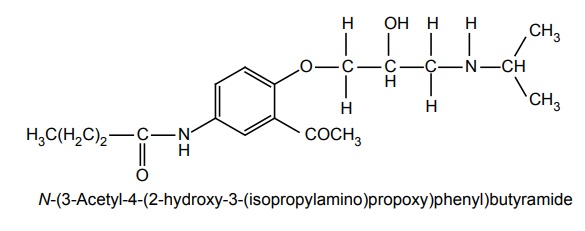
Synthesis and drug profile are discussed under sec IV, ‘Adrenergic Bolckers’
Properties and uses: It is a white to off-white powder that is soluble in water and alcohol. It is a1β -selective adrenergic receptor blocker and is used for controlling ventricular pressure beats.
ii. Esmolol HCl (Cardesmo, Neotach)
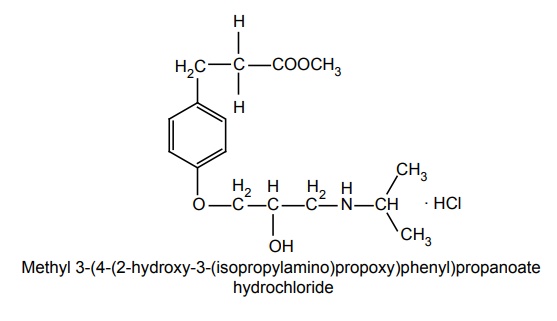
Properties and uses: It is available as white crystals and it is used in the treatment of supraventricular tachycardia.
Dose: A loading dose of 500 μg/kg/min is infused over 1 minute followed by a maintenance dose of 50 μg/kg/min.
Synthesis
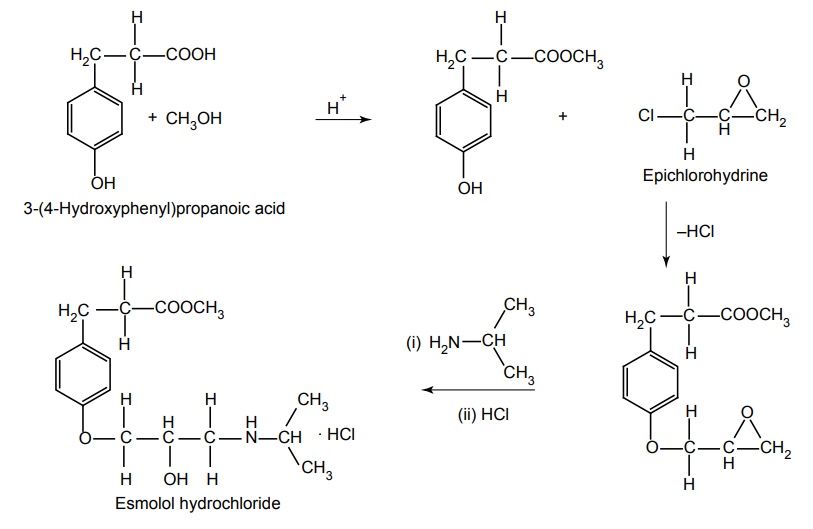
iii. Sotalol (Sotagrad)
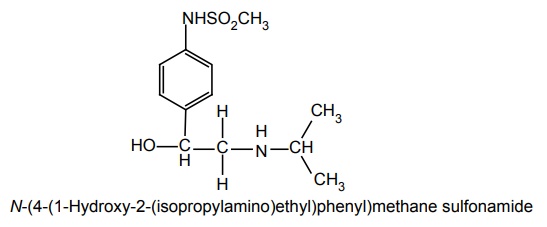
Properties and uses: It is a white or almost white powder that is insoluble in methylene chloride, but freely soluble in water and in alcohol. It contains a chiral centre and is marketed as a racemic mixture. Because of its enantiomers, its mechanism of action spans two of the antiarrhytmic drugs classes. The l (–) enantiomer has both β-blocking agent (Class II) and potassium channel-blocking (class III) activity. The d (+) enantiomer has class III properties similar to those of the (–) isomer, but its affinity for the β-adrenergic receptors is 30–60 times lower. The sotalol enantiomers produce different effects on the heart. Class III action of d-sotalol in the sinus node is associated with slowing of the sinus heart rate, whereas β-adrenergic blockade contributes to the decrease in the heart rate observed with l or d-sotalol. It is effective against both supraventricular and ventricular arrhythmias.
Synthesis
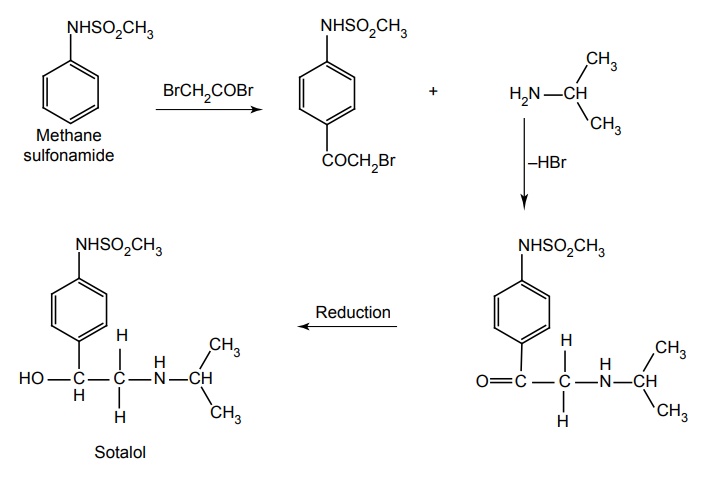
Assay: Dissolve the sample in anhydrous formic acid and add acetic anhydride. Titrate with 0.1 M perchloric acid, determine the end point potentiometrically.
Storage: It should be stored in well-closed airtight containers and protected from light.
Dose: The usual dose is 80 to 320 mg twice a day oral.
Related Topics
